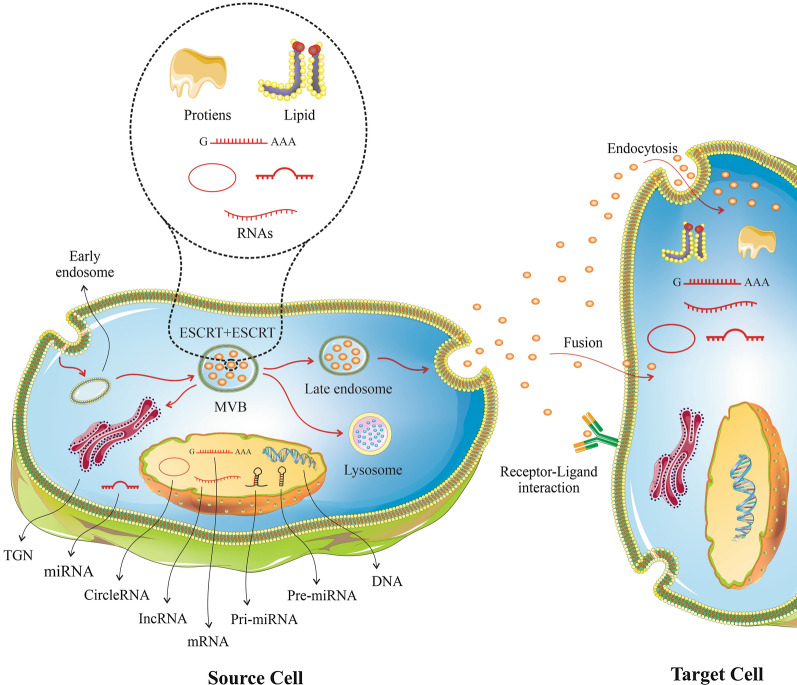Fig. 1.
Schematic demonstration of the biogenesis, contents, and release ofexosomes. The Exo are produced by the budding of the endocytic membrane and the creation of ILV inside the cell. Throughout maturation, RNAs, proteins, and lipids are fused into ILV through ESCRT‐dependent or ESCRT‐independent pathways, and early endosome maturation gives rise to MVBs. MVBs can be conveyed to the TGN for endosome recycling, transported to lysosomes for degradation, or transfer alongside microtubules to incorporate with the plasma membrane and secrete exosomesinto the extracellular space. MVB incorporation with the cellular membrane requires some critical factors such as Rab GTPases and SNARE complexes. The secreted molecules from the source cell can be further conveyed to recipient cells by endocytosis, direct membrane fusion, and receptor‐ligand interaction. Intraluminal vesicles (ILVs), Multivesicular bodies (MVBs), Endosomal complexes required for transport (ESCRT), Trans-Golgi network (TGN), Soluble NSF attachment protein receptor (SNARE), Ras-related in brain (Rab), MicroRNA (miRNA)

